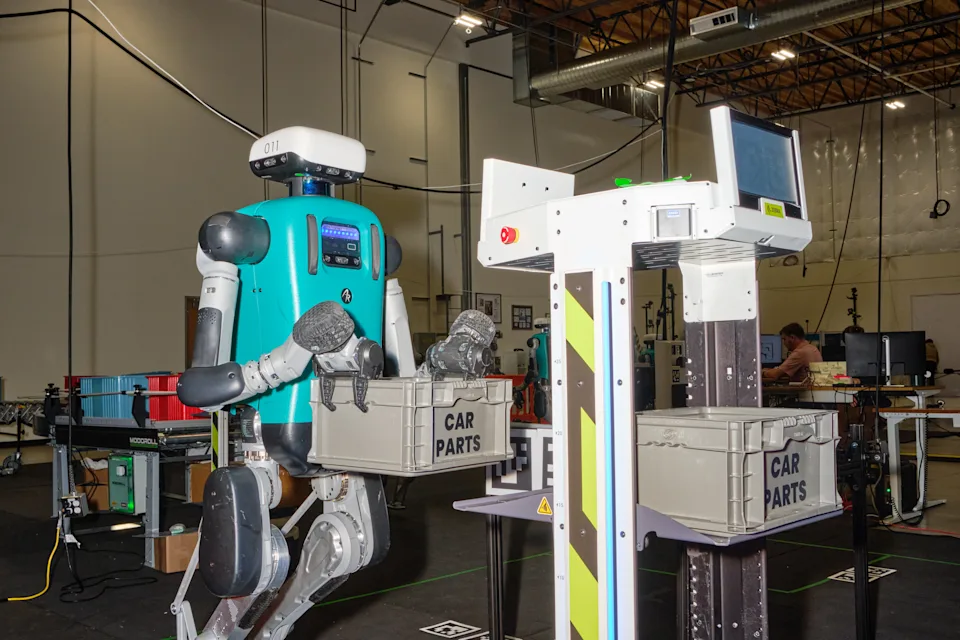Apple (AAPL) is best known for its iPhone. But what will come next? According to Morgan Stanley, humanoid robotics.
In a research report, the investment bank claims that Apple’s nascent robotics work could eventually be worth upward of $133 billion per year or more.
“Leveraging Apple’s market share across a number of leading consumer products today, as well as considering the opportunity to monetize both products and services, we conservatively estimate Apple’s Robotics revenue can reach $130 billion by 2040 in our ‘median case,’ which assumes 9% market share …15 years from now,” the analysts, including Apple watcher Erik Woodring, wrote in the report.
Humanoid robots have long been the work of science fiction. But tech companies are increasingly putting the concept forward as a viable commercial product thanks to advancements in generative AI and smaller, more powerful computers.
Manufacturers and logistics hubs currently use robotic arms and robots designed to move large stacks of products. And they’ve already begun testing and rolling out humanoid robots to help humans address specific tasks.
Foxconn says it plans to deploy humanoid robots at its Nvidia (NVDA) AI server plant in Houston, based on Nvidia’s own robotics technologies.
Nvidia CEO Jensen Huang, a major proponent of humanoid robotics, which the company refers to as physical AI, says robots represent a multitrillion-dollar opportunity.
The company currently markets its Isaac Gr00t, which includes a series of foundation models and the company’s Jetson AGX Thor computer, to power and train robots.
In June, Amazon (AMZN) announced that it rolled out its 1 millionth robot to a fulfillment center in Japan, although the robot is more like a Roomba that can move stacks of products around a warehouse floor than a humanoid.
The company has also tested Agility Robotics’ Digit robot in its warehouses and, according to The Information, is testing the use of robots to deliver packages.
Amazon also offers its Astro home robot, which serves as a kind of in-home sentry on wheels, as part of its Day 1 Editions product line. But you need an invitation and $1,599 to purchase the pint-sized bot.
Elon Musk’s Tesla (TSLA) is also working on its own Optimus line of humanoid robots, with the mercurial CEO writing in a post on X that 80% of Tesla’s value will be tied to the robots.
Apple’s efforts
Apple has already developed the kind of technology necessary for robotics over the years, including as part of its now-defunct self-driving car effort.
And according to Bloomberg’s Mark Gurman, the company is working on a tabletop robotic arm attached to an iPad-like display that can turn toward you when you’re speaking to it.
“By 2040, we estimate 415,000 annual and 1.6 million cumulative US household humanoid units are adopted, representing a 1.65% household penetration rate,” Woodring wrote.
“By this time, we estimate the average selling price of a humanoid at ~$30K, which likely will continue to decline over time,” he added.
According to the analysts, Apple has a number of weapons in its arsenal that could make it a major player in the humanoid robotics space, including its $130 billion in cash and equivalents and a massive install base of 2.3 billion devices.
But getting humanoid robots into consumers’ homes still faces several major challenges.
Perfecting the necessary computer vision technologies to avoid people, pets, and stray piles of laundry is key, as is ensuring that robots can easily pick up, move, and set down things like glassware.
And while companies have shown that robots can do things like load dishwashers or move objects from one fixed location to another, the bots are generally slow-moving, making them far from useful for when you need help cleaning up before company comes over.
It’s also difficult to imagine that consumers would be willing to spend the same amount they’d pay for a small used car on a robot. If humanoid robots are going to take off, prices will need to fall to the point where consumers won’t need to take out a loan to buy them.
For now, you’ll just have to keep unloading your dishwasher yourself.

